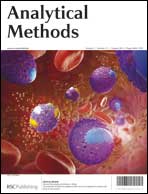A novel pulsed xenon flashlamp photoreactor and its potential applications in flow analysis with chemiluminescence detection
Abstract
The pulsed xenon flashlamp as a source of UV-light in a flow analytical system is proposed. Milliseconds long, high energy pulses were applied to a suspension of photocatalyst (TiO2) in order to generate free radicals capable of participating in a luminol chemiluminescence reaction. Three commercially available TiO2 powders of different crystal structures and sizes were selected to prepare suspensions in an H2O2 solution or in ultrapure


 Please wait while we load your content...
Please wait while we load your content...